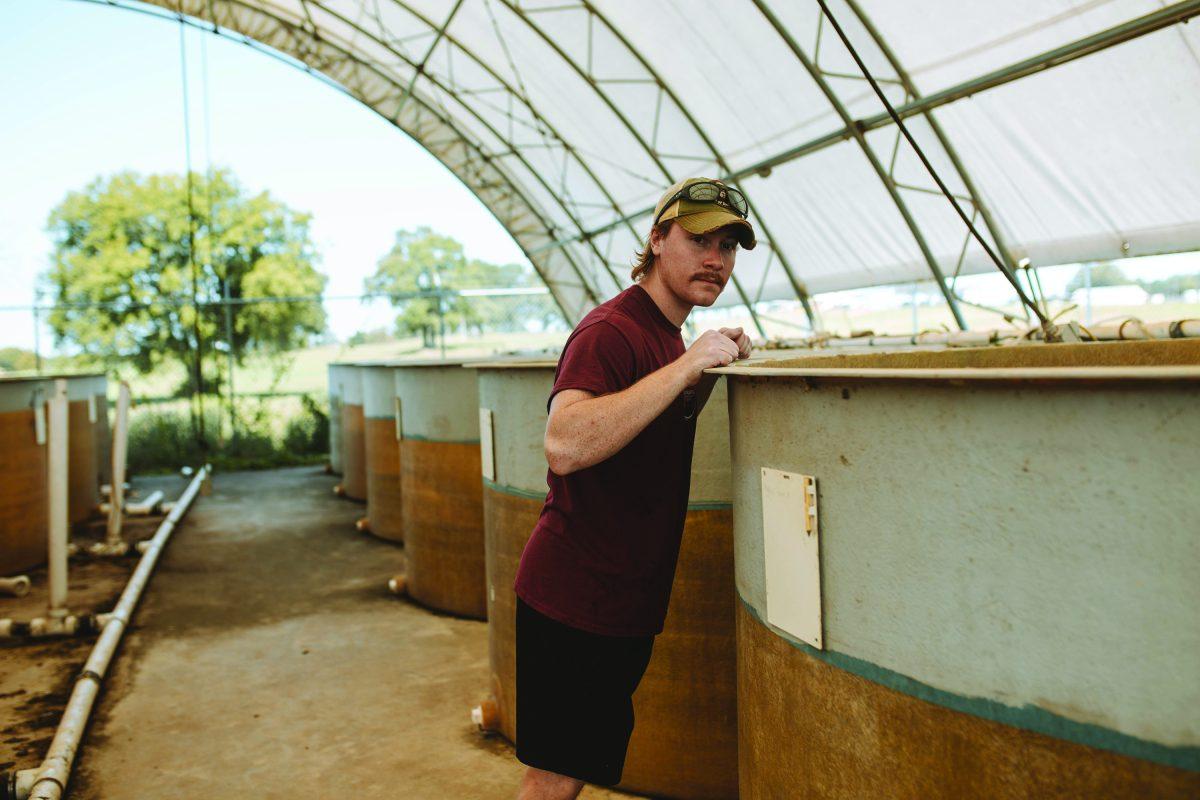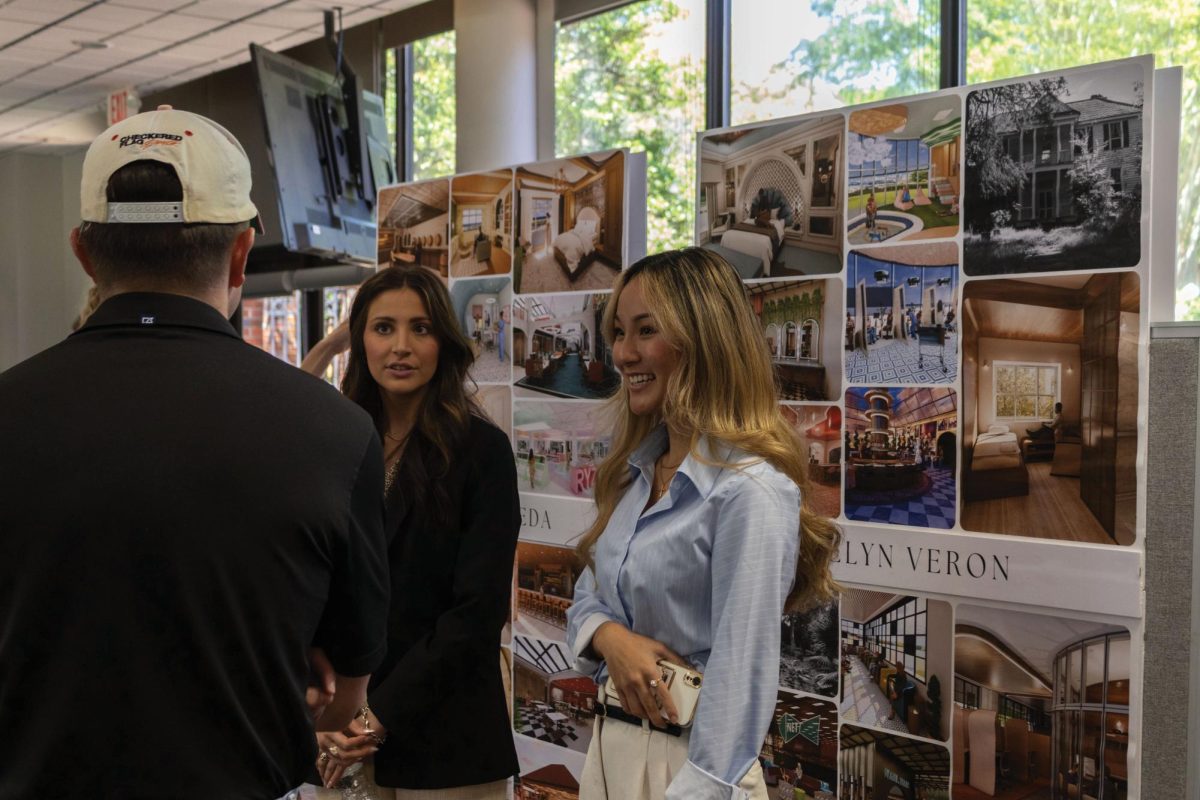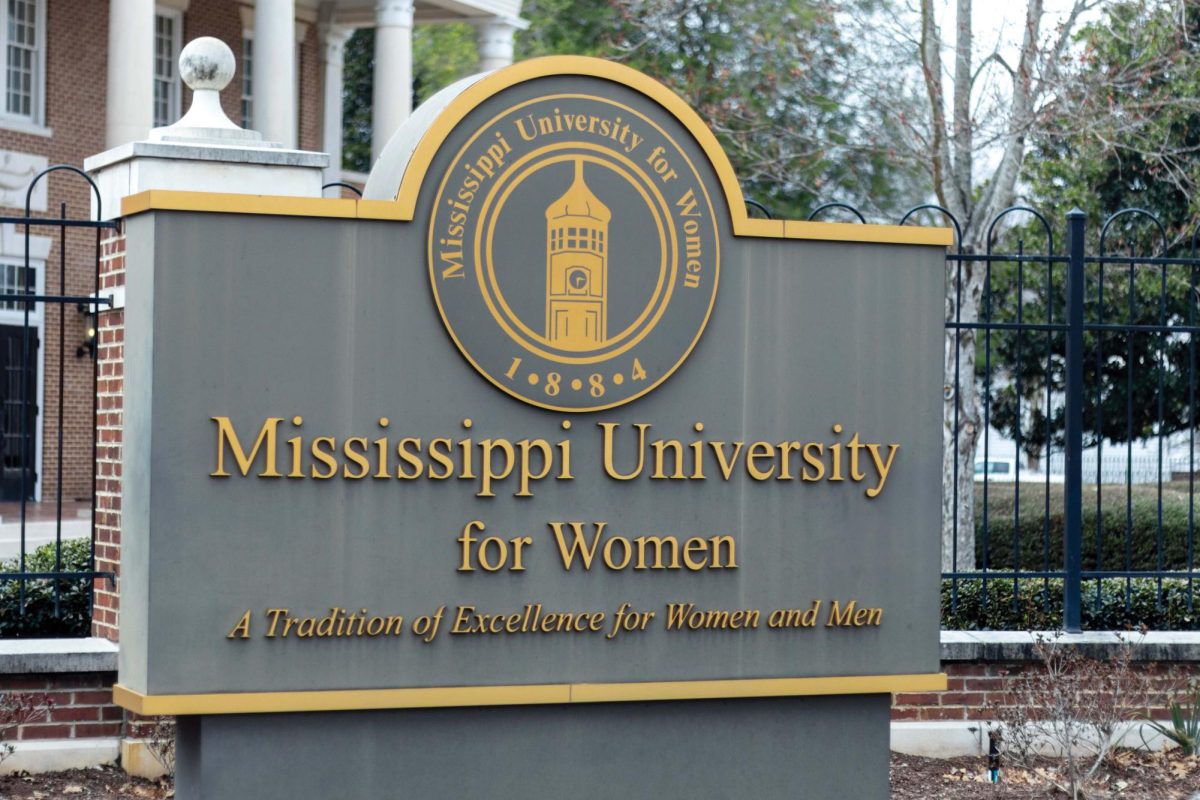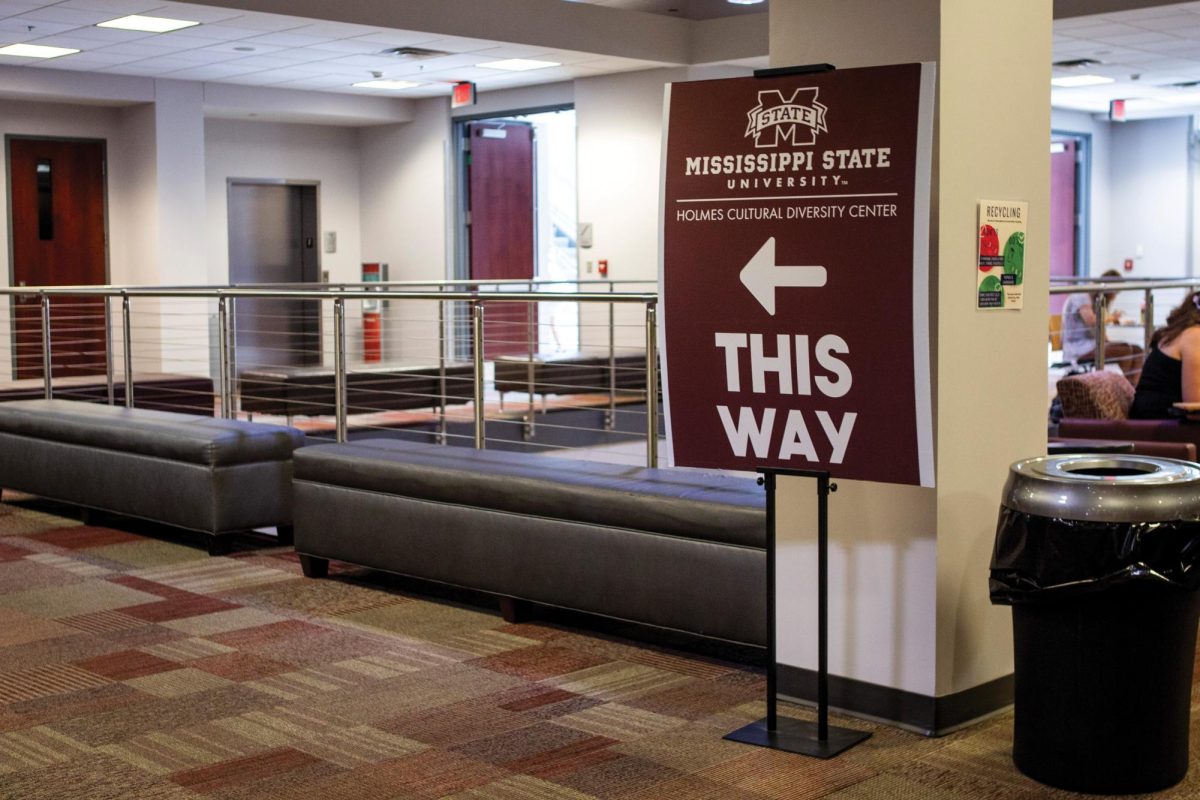Peter Allen stood on a catwalk overlooking two swirling, bubbling tanks. The droning noise of aerators did not bother them, but as Allen began to discuss the importance of Mississippi’s catfish industry, the hundreds of blue catfish in the left tank instinctively moved into a tight ball while the channel catfish continued to swim unbothered.
Behavioral patterns like the observed schooling movements of blue catfish versus channel catfish is just one of the many things Mississippi State University aquaculture studies in an effort to best understand the fish and its production.
Since its rise in the 1960s, catfish aquaculture has been one of Mississippi’s foremost industries, and the state has been the nationwide leader in production and acreage, according to the U.S. Department of Agriculture. However, since a nationwide peak in 2003, various factors such as cheaper international imports and higher feed prices have cut the industry’s presence in the states in half.
Peter Allen, associate professor in wildlife, fisheries and aquaculture, and one of the main researchers at the South Farm Aquaculture Facility, is not opposed to international competition but only if U.S. farmers and international farmers are allowed to compete fairly, a factor which has played a part in the U.S. industry’s decline.
“Competition is a good thing per se as long as it is on a level playing field. Farmers here were undergoing more intensive inspections. But imported product would only have limited inspection, and culture conditions did not have to be maintained at the same level,” Allen said. “In the U.S. catfish industry, we were making sure that we had clean product, but the imported product was not being held to the same standard. The challenge there was that prices could be undercut because a lot of the costs for inspections and maintaining a good product were not going on. The farmers really wanted to level things out.”
Imports had a noticeable effect on the industry. Jimmy Avery, extension professor and extension aquaculture leader at the MSU extension in Stoneville, says national acreage has been cut from 115,000 at its peak to 61,000 acres in 2020. MSU’s role is in helping the state’s and region’s farmers become more efficient with what they have.
“We have improved average yield on a per acre basis. Back in 2009, we were doing 3,900 pounds per acre. In 2019, we were doing around 7,200 pounds per acre,” Avery said. “I think over that 10-year span, the technology we have been able to evaluate and teach to our farmers allows for more intensive production systems.”
Avery described the different technologies MSU has developed and distributed to catfish farmers on a state and national level in an effort to intensify the per-acre production. Developments include highly-aerated ponds, split-ponds, hybrid catfish that are more resistant to disease and more productive in intense systems and vaccines for fingerlings — or young catfish — that increase the survival rate.
Avery said he believes these technologies have been key in the resurgence of the Mississippi catfish industry, an industry that needs to adapt.
“I think these four technologies have had the greatest impact on increasing that gross yield. The catfish farm is like anything else. Our farmers have to get more efficient in order to be more competitive,” Avery said. “Even if we see some slight slack in imports, we still need to be able to advance our technologies to be competitive.”
The effort put into the industry shows. Despite a substantial cut in acreage, the national production of foodsize catfish as of 2019 was at roughly 75% of the 2010 production with about half of the producing acres belonging to Mississippi, according to the USDA.
With the industry finding some relief in MSU’s research, the university plans to keep moving forward. As he walked through a room filled with many tanks labelled with different temperatures and species, Allen discussed the current research at MSU and the future production of the industry.
“We try to respond to whatever the industry needs. We have been looking at things like their adaptability to different environmental conditions. Mississippi is an interesting place, so we need to look at the strain that is best suited for the conditions here. If conditions change, let’s say for climatic reasons, what strain do we need to look at,” Allen said. “We try to consider how we can help the industry into the near future and far future, helping producers here to be successful and keep the industry strong.”
Allen continued into the main room, motioning to a tank with many small Atlantic sturgeon, an endangered species native to the southeastern U.S.
“There are not that many universities that have nice aquatic facilities, even in our area where aquaculture is so important. We have the ability to support our state with aquaculture for catfish and foodfish industries, for conservation issues, like the alligator gar and Atlantic sturgeon,” Allen said. “These species are all a part of our natural heritage here. Not everybody is aware of some of these species, and Mississippi is rich in what we have. We are a state that historically had an amazing diversity, and we still have it.”
Reuben Moore, interim vice president for the division of agriculture, forestry and veterinary medicine, plans to hold fast to the commitment MSU has made to one of the state’s biggest industries.
“There is no question that our contributions have made a difference. When the catfish industry came to Mississippi, the knowledge of the industry and the fish was just very much lacking. We made a commitment to address issues, like disease, nutrition, predation and production issues. As a result of all that, we have a healthier fish that is better for the population that consumes these as food,” Moore said. “We have a big commitment to the industry, and we are going to continue that commitment. Mississippi is the largest catfish producer in the United States. This is one of the industries we are going to continue to support.”
Catfish comeback swims in on the shoulders of MSU research
Mary Georgia Hamilton | The Reflector
MSU graduate student Josh Neary overlooks tanks at South Farm aquaculture facility.
About the Contributor

Daniel Dye, Former Managing Editor
Daniel Dye served as the Managing Editor in 2021.
He also served as the News Editor from 2020 to 2021.
0
Donate to The Reflector
Your donation will support the student journalists of Mississippi State University. Your contribution will allow us to purchase equipment and cover our annual website hosting costs.
More to Discover



















